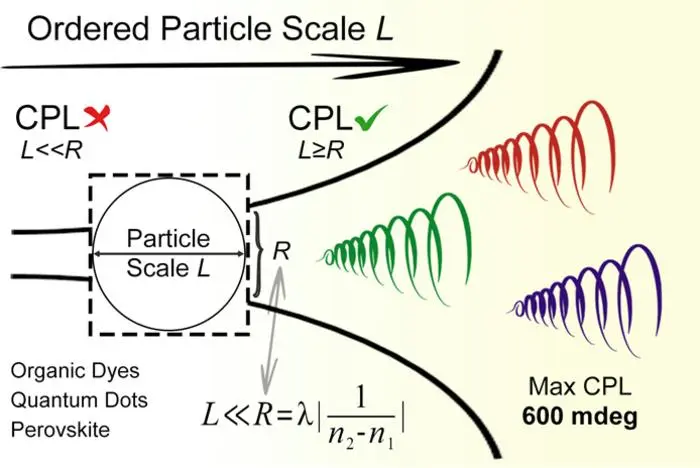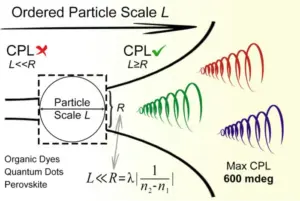A new study focuses on an important aspect of materials science known as chirality, or asymmetry, of materials. Specifically, the researchers are using a technique called circularly polarized luminescence (CPL) spectroscopy to characterize the chirality of luminescent materials. CPL is a relatively new technique, but it has the potential to revolutionize a number of fields. In this instance, one possible application could be CPL can be used to create displays that emit circularly polarized light which, in turn, could prove beneficial in 3D displays and holographic displays.

Luminescent materials emit light when they are excited. The way this light is emitted can tell scientists a lot about the material’s properties, including its chirality. In this study, the researchers have discovered that not only chiral structures, but also non-chiral ordered structures can impact CPL signals significantly, which had not been previously considered in a substantial way.
Professor Xiang Ma’s research group from East China University of Science and Technology conducted experiments and created a model to measure and quantify the impact of the order of a medium (the substance or material through which light is passing) on CPL signals. They identified two variables, L and R, which are the transmission distance in a uniform medium and the critical scale of the scale effect, respectively. They found that if L is much smaller than R, the anisotropy (directional dependence) of the medium can be ignored for CPL signals, but for other cases, the anisotropy must be taken into account.
One important concept they discussed is measurement entropy, a factor determining the isotropy (uniformity in all directions) and anisotropy of CPL signals. When measurement entropy is small, the CPL signal is anisotropic, and the size of the signal depends on the long and short axes of the corresponding ellipse; when the measurement entropy is large, the CPL signal is isotropic.
In their experiments, they used a variety of luminescent materials and adjusted their states to study the effect of macroscopic anisotropy on CPL signals. They also introduced anisotropy using a thin film stretching method with a PVA (polyvinyl alcohol) film. They used materials like Rhodamine B, CdSe quantum dots, aggregation-induced luminescent dye tetraphenylethene (TPE), and perovskite luminescent film to test their theory.
The results indicated that regardless of the luminescent mechanism, the prepared materials had CPL signals, demonstrating the general applicability of their method and findings. This research provides new insights into understanding and manipulating the luminescence properties of materials, which can be useful in a variety of applications, including sensor technology, display technology, and more.
Reference
Siyu Sun and others, Scale effect of circularly polarized luminescent signal of matter, National Science Review, Volume 10, Issue 5, May 2023, nwad072, https://doi.org/10.1093/nsr/nwad072

